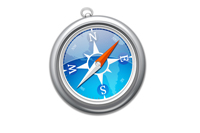Safari 5 review
We take a look at Apple's latest browser to see what Safari 5 has to offer users.

Extensions are so new to Safari that they don’t provide a convincing reason to switch right now. Right now it's Reader that has the biggest impact on your reading. Even speed isn't significantly different to Chrome, though that's a virtue that makes Safari 5 worth checking out if you've discounted previous versions as being too slow with rich internet applications. Safari is a much better browser for Windows. But we can't really see an overwhelming reason to switch to it on Windows, especially when its most notable feature can be had in other browsers through a bookmark.
Enhancing functionality
Potentially more significant, Apple has finally decided to do something that other browsers have been doing for years and allow Safari's functionality to be enhanced with extensions that can be run on the Windows and Mac versions.
Right now, this infrastructure isn't even enabled by default - to turn it on, you have to go by the circuitous route of turning on Safari's menu bar, enabling its Develop menu and turning on Extensions there. That's most likely because Apple sprung the feature on developers at its recent conference, so it isn't yet ready to launch its public Extensions Gallery. That will open later in the summer to showcase the growing library of officially signed (but free to develop) extensions.
That should bring some genuinely useful tools, since eager beavers swiftly got to work within days of Safari 5's release. An index of examples can be found at safariextensions.tumblr.com, among which you'll find an Amazon.com search bar, a basic URL shortener and a tool that dims all page content except for the video you're watching.
No matter how long it has taken, it's a great move that makes Safari a more appealing alternative, not to mention a more realistic one if you've stuck with Firefox until now for this capability. It's still early days, though, and Safari has years of catching up to do.
Developers don't need to buy a Mac or any development tools to make extensions. As with other browsers, they require a good command of HTML, CSS and JavaScript, and the tools to package them up for distribution are built right into the browser. When it comes to security, they're sand-boxed from the rest of the browser, a common theme with browsers these days, which Apple began to address with the release of Snow Leopard, on which the Flash Player plug-in is isolated to reduce the risk of it taking down the browser.
Get the ITPro daily newsletter
Sign up today and you will receive a free copy of our Future Focus 2025 report - the leading guidance on AI, cybersecurity and other IT challenges as per 700+ senior executives
-
 Cleo attack victim list grows as Hertz confirms customer data stolen – and security experts say it won't be the last
Cleo attack victim list grows as Hertz confirms customer data stolen – and security experts say it won't be the lastNews Hertz has confirmed it suffered a data breach as a result of the Cleo zero-day vulnerability in late 2024, with the car rental giant warning that customer data was stolen.
By Ross Kelly Published
-
 Women show more team spirit when it comes to cybersecurity, yet they're still missing out on opportunities
Women show more team spirit when it comes to cybersecurity, yet they're still missing out on opportunitiesNews While they're more likely to believe that responsibility should be shared, women are less likely to get the necessary training
By Emma Woollacott Published
-
 OpenAI wants developers using its new GPT-4.1 models – but how do they compare to Claude and Gemini on coding tasks?
OpenAI wants developers using its new GPT-4.1 models – but how do they compare to Claude and Gemini on coding tasks?News OpenAI says its GPT-4.1 model family offers sizable improvements for coding, but tests show competitors still outperform it in key areas.
By Ross Kelly Published